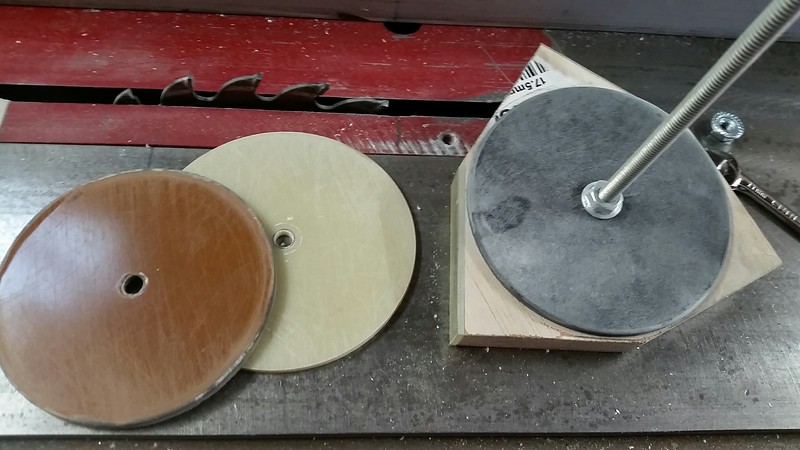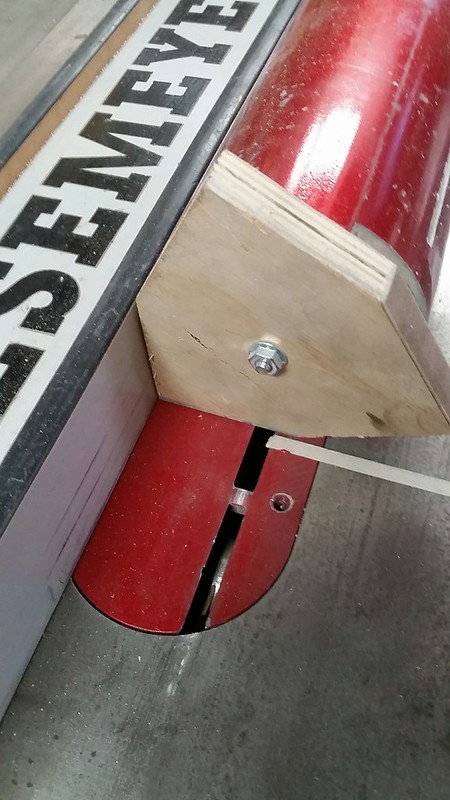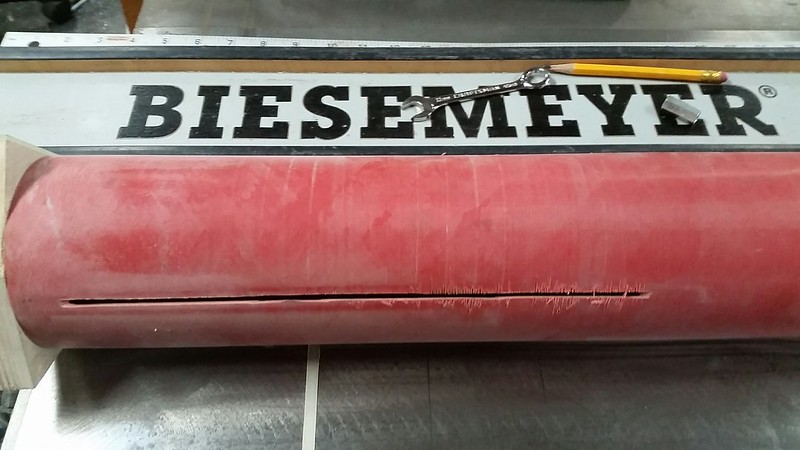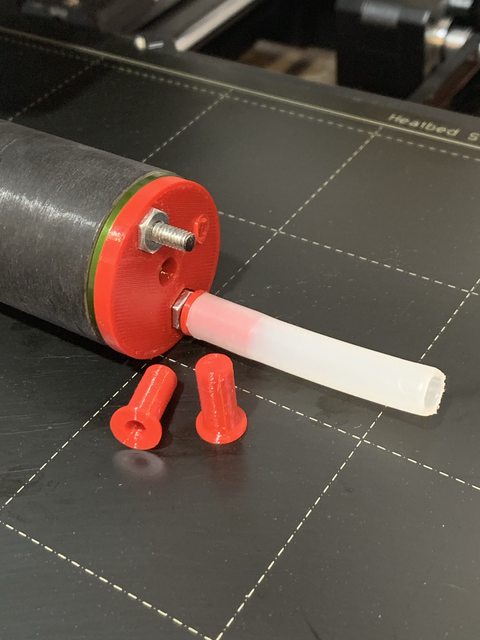- Joined
- Dec 7, 2009
- Messages
- 3,531
- Reaction score
- 2,785
It's been awhile since I've done a build thread of sorts. I will be combining a couple of topics (which go together) 98mm min dia rocket and high altitude deployments.
The rocket is really nothing fancy. It's made mostly from pieces I've been gathering and even some stuff from my local junkyard. The design is what I call an "AeroPac Sport flyer" I'm not trying to be funny or slam other people. I'm lucky in that Black Rock is my home field. With that being said I've seen a lot of record altitude attempts. Mostly just attempts. The two biggest issues are construction not up to the task or poor design. Most of the stuff I've learned has been at other peoples expense. And lots of my own thrown in for good measure.
I'll start with design. Some attempts go unstable fairly quickly. I call these rockets glass slippers. If everything is just right they work and get some amazing altitudes. When they don't work they disintegrate. These rockets usually have one or both of the following issues. The fins only have 1 caliber of span and the rockets stability margin is 1 caliber or slightly more.
I like my AeroPac Sport flyers to have fin spans of 1.1 calibers. This seems enough to keep some fin in clean enough air to over come any mishaps.
Below is 3" min dia AeroPac Sport flyer flying on a motor with 40" of propellant.
That little wiggle was at mach 1.76
I owe it's ability to recover to 3 things. Fins with simi spans of 1.1 calibers, on the pad stability margin of 2.5 and construction methods up to the task.
I like flying these types of rockets with 2.5 calibers of stability or even more. I'm a simple guy and look at the CP and CG as a couple of guys running towards each other. They both need to stop but sometimes one of them or even both of them can't stop in time and they collide. I'm not sure if this is technically what's happening but it works in my mind.
So now design and construction. Fin shape has a lot to do with flutter. You can either use a well designed fin or over build them to work. I've only used .125: G10 three times in all my rockets. Most of the time it's .097"
This rocket has .125" G10. I found a place that had the highest rated G10 (actually G11 or G12) that I could find.
Below is some cut and paste from an email I sent to some "buddies". (you are now in the loop!)
_______________________________________________________________________________________
I'm working on a new project and needed to buy some more G10 fin material. In the past I've gotten it from McMaster Carr.
Here are some of the specs from McMaster. https://www.mcmaster.com/#8667k243/=1bhdwzr
G10/FR4 .125"
Max Temp 265F
Compression strength 35,000
Flexural Strength 45,000
I found a new source, where the material seems to have better specs. https://accurateplastics.acculam.com/Asset/Acculam®EpoxyglasG11,FR5.pdf
G11/FR5 .125"
Max Temp 356F
Compression Strength 65,000
Flexural Strength 75,000
There is a $75 min order. They also don't tell you the shipping costs until after is ships. (same as McMaster?)
I ordered two .125" x12x24 sheets plus one .062" x12x12. came to $75.94
Shipping was $23.52 from Yonkers New York
Info only....
Tony
____________________________________________________________________
I have a fin design that I use on all my rockets. For this rocket and another one that's top secret..I wanted something different. I wanted one where some took the time to design it, that knew what they were doing. That person is David Reese and his Falcon rocket. https://wildmanrocketry.com/search?q=Falcon
More later....
Tony
The rocket is really nothing fancy. It's made mostly from pieces I've been gathering and even some stuff from my local junkyard. The design is what I call an "AeroPac Sport flyer" I'm not trying to be funny or slam other people. I'm lucky in that Black Rock is my home field. With that being said I've seen a lot of record altitude attempts. Mostly just attempts. The two biggest issues are construction not up to the task or poor design. Most of the stuff I've learned has been at other peoples expense. And lots of my own thrown in for good measure.
I'll start with design. Some attempts go unstable fairly quickly. I call these rockets glass slippers. If everything is just right they work and get some amazing altitudes. When they don't work they disintegrate. These rockets usually have one or both of the following issues. The fins only have 1 caliber of span and the rockets stability margin is 1 caliber or slightly more.
I like my AeroPac Sport flyers to have fin spans of 1.1 calibers. This seems enough to keep some fin in clean enough air to over come any mishaps.
Below is 3" min dia AeroPac Sport flyer flying on a motor with 40" of propellant.
That little wiggle was at mach 1.76
I owe it's ability to recover to 3 things. Fins with simi spans of 1.1 calibers, on the pad stability margin of 2.5 and construction methods up to the task.
I like flying these types of rockets with 2.5 calibers of stability or even more. I'm a simple guy and look at the CP and CG as a couple of guys running towards each other. They both need to stop but sometimes one of them or even both of them can't stop in time and they collide. I'm not sure if this is technically what's happening but it works in my mind.
So now design and construction. Fin shape has a lot to do with flutter. You can either use a well designed fin or over build them to work. I've only used .125: G10 three times in all my rockets. Most of the time it's .097"
This rocket has .125" G10. I found a place that had the highest rated G10 (actually G11 or G12) that I could find.
Below is some cut and paste from an email I sent to some "buddies". (you are now in the loop!)
_______________________________________________________________________________________
I'm working on a new project and needed to buy some more G10 fin material. In the past I've gotten it from McMaster Carr.
Here are some of the specs from McMaster. https://www.mcmaster.com/#8667k243/=1bhdwzr
G10/FR4 .125"
Max Temp 265F
Compression strength 35,000
Flexural Strength 45,000
I found a new source, where the material seems to have better specs. https://accurateplastics.acculam.com/Asset/Acculam®EpoxyglasG11,FR5.pdf
G11/FR5 .125"
Max Temp 356F
Compression Strength 65,000
Flexural Strength 75,000
There is a $75 min order. They also don't tell you the shipping costs until after is ships. (same as McMaster?)
I ordered two .125" x12x24 sheets plus one .062" x12x12. came to $75.94
Shipping was $23.52 from Yonkers New York
Info only....
Tony
____________________________________________________________________
I have a fin design that I use on all my rockets. For this rocket and another one that's top secret..I wanted something different. I wanted one where some took the time to design it, that knew what they were doing. That person is David Reese and his Falcon rocket. https://wildmanrocketry.com/search?q=Falcon
More later....
Tony



































